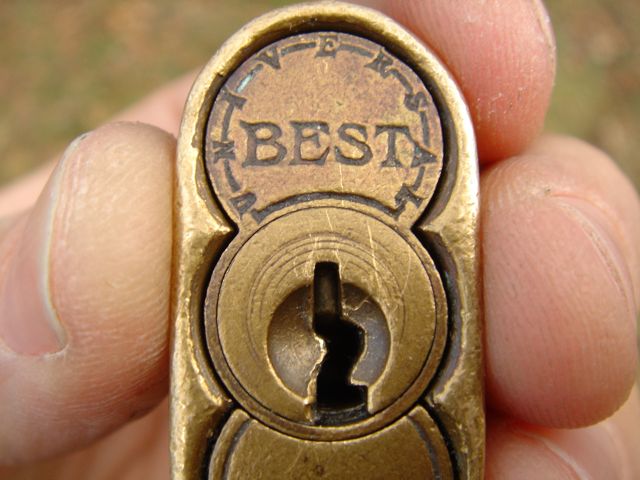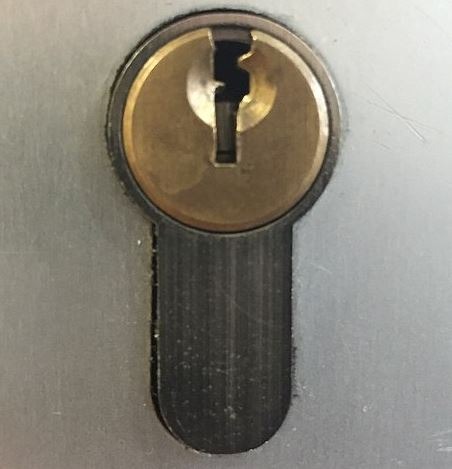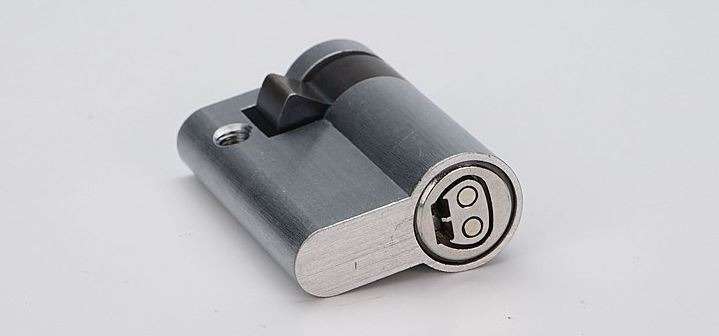Since ancient times, locks have been used to secure doors against burglars and intruders. When locks were still made manually, makers would carve a wooden core and fill it with molten metal that hardened over time to become the plug of the lock. Locks are even mentioned numerous times in the Old Testament, and the first lock-related archaeological finds date back about 4,000 years. Today, locks are used in many different applications and configurations, and the way they are crafted has already changed.
In the modern age, locks are made of multiple components, which makes them more complex than their predecessors. However, some of the processes involved are still similar to the way they were made before. The only difference is that nowadays locks and their internal components are made from varying materials and could cater to various additional security features.
A Brief History of Locks
Egyptian locks are represented by these in the pyramids. These very first locks were pin tumblers, which are actually not that dissimilar from the typical door locks used today. An enormous wooden housing that was mounted to the door made up the Egyptian lock. Iron pins that fell into slots kept a wooden bolt from slipping through the lock while keeping it firmly in place. The key was a piece of straight wood with pegs sticking up from one end. By inserting the straight end of the key into a peghole and turning it, the pegs that lined up with the holes in the lock pushed the pins up and allowed them to fall through their slots.
By around 700 B.C., the Greeks had invented a basic door lock. In order to do this, a bolt was pulled through door brackets using a latchstring. The homeowner had the option of locking the door from the outside by pulling the string. After that, the string was reinserted through the keyhole. The actual key was a two-to-three foot long sickle-shaped piece of metal. The bolt could be pulled back from the outside by inserting the key into the lock’s hole. The main flaw with this lock was that anyone could open it with a curved stick or their own key. The heavy metal key was another drawback.
The Romans adopted the Greek lock system, but they overcame the issue of the bulky key by tying it to a slave, who was then tethered to the doorpost. The warded lock was a new type of lock that the Romans eventually created. In a warded lock, the keyhole had wards—notches and grooves—cut into it, and the key had wards—notches and grooves—cut into it as well. Only the right key could fit into the keyhole, and when it did, its tip hooked onto the bolt and pulled it out. The warded lock was significantly smaller than its predecessor, and the keys were so tiny that no slave was required to maintain it.
By the thirteenth century, warded locks had become commonplace in Europe and were still in use well into the eighteenth. Despite being simple to pick and providing little resistance to determined thieves, they persisted. The most likely explanation for the longevity of this system is that warded locks were more practical than alternatives.
The Romans also employed padlocks, which functioned by turning a bolt to release a spring from a shackle. These were used to lock trunks. Similar locks were created in Russia, China, and India at about the same time. Chinese people also invented the combination lock. It featured movable rings with letters or numbers engraved on them, and its hasp could only be unlocked when the rings were arranged so that the proper sequence of symbols was visible. Combination locks arrived in Europe during the Middle Ages and were primarily applied to couriers’ dispatch boxes.
What are lock cores?
Lock cores are whole assemblies, frequently shaped like a “figure eight,” that typically include the plug, shell, tumblers, springs, plug retainer, and spring cover. It is mainly utilized in core cylinders and locks that are detachable and interchangeable.
As complete operating units that include a plug, shell, tumblers, springs, a plug retainer, and spring covers, cores are very similar to cylinders in this regard. Despite a few rare exceptions, cores typically do not directly attach to a cam or tailpiece, unlike cylinders. Additionally, unlike cylinders, cores are inserted into housings rather than being screwed in or secured with a spring-loaded retaining pin, or directly into the lock, such as in the handle of a leverset.
These days, lock cores can be “keyed alike” or “keyed differently,” depending on the manufacturer and lock code. When locks are keyed alike, they all open with the same key because they share the same lock code and manufacturer. Different keys will be required to open the locks if they are keyed differently.
Raw Materials
The internal mechanisms of locks, such as the lock cores, are generally made of brass or die-cast zinc. Standard five-tumbler key locks are made of various strong metals. The internal mechanisms of locks are generally made of brass or die-cast zinc. The cam, which is the tongue that protrudes from the lock to secure it, is usually made of steel or stainless steel. The outer casing of a lock may be made of brass, chrome, steel, nickel, or any other durable metal or alloy.
Manufacturing Process
The tiny components made it more difficult to make traditional lock cores and other internal lock mechanisms. But thanks to machines and more sophisticated technology, modern substitutes are simpler to produce. The design stage typically precedes the production of locks. From low-security to high-security locks, there are different grades.
The majority of the time, low-security locks are constructed of less expensive materials and can have their parts mass produced. The manufacturer evaluates the customer’s specifications as the first step in the procedure. For instance, the customer orders a lock to fit a specific size door and requests that the locks can be opened with a master key.
After that, the lock manufacturer develops the best design for that client’s requirements. A customer may have previously purchased locks from one company and may now want additional, identical locks from a different manufacturer who promises to produce them more affordably.
The key is created next. The key is made first for the typical five-tumbler key lock. The ridges or combinations for each key are cut by the lock manufacturer using blank keys they purchase. Five bumps, cut to various levels, are present on each key. These levels have numerical designations. One is a low cut; two and three are the next levels up. Even though some manufacturers may use up to seven levels, most often there are only four. With the first ridge at level 1, the second at level 2, the third at level 3, and so on, a key with the combination 12341 is cut. The maker of the lock selects the combinations at random from a list and creates each key uniquely.
The internal mechanisms are created after the keys. These may require retooling or a reset of the manufacturing equipment because they were specifically made to fit this lock order. The machinists may perform a test run prior to beginning a major project because the tiny interior parts, specifically the pins, must be manufactured to extremely tight tolerances. Then, if required, the devices can be reset. Small brass parts require a lengthy machining process. They could be cast, then ridged, polished, jeweled, and grooved. These tasks are completed with precision tools that can cut the metal to tolerances as tight as 0.001 inches.
The rest of the lock’s components are also made by the manufacturer. Die-casting is followed by additional machining to create the cylinder, or plug, that the key fits into, guard plates, washers, the bolt or cam, and the casing. The number of parts varies depending on the lock’s design, but even a small, straightforward lock may have thirty different components, some of which require multiple toolings. A few weeks may be needed to make the lock components.
After all the parts have been prepared, the locks are manually put together. The first step is for the worker to insert the pins into the lock’s plug, or cylinder, in order to match the combination on the key. The worker inserts a tiny spring and then the lock pin while holding the small parts in place with a tiny tool called an assembly pick. The assembly pick, which has a point on one end and a small screwdriver on the other, is used by the worker to prod the delicate components into their correct positions.
When a lock is completed, the worker tests it with a key to make sure it operates. It might then move on to a quality control station where it will be polished or dusted. Workers box and package the finished locks for shipping.



